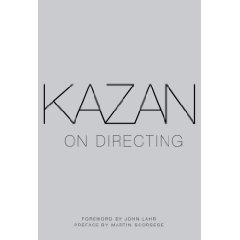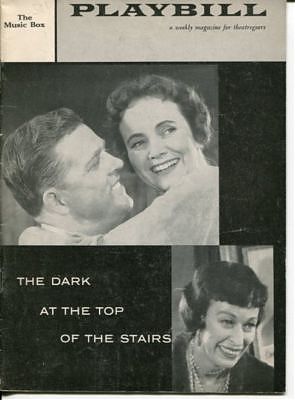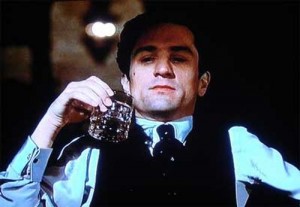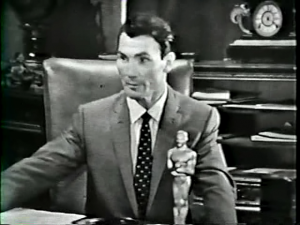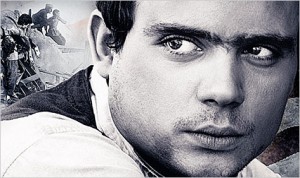From Film Comment (July-August, 2009). — J.R.
Kazan on Directing
Elia Kazan
Alfred A. Knopf, $30.00
This is a class act, given something like the Library of America treatment. The editor, Robert Cornfield, is similarly credited not on the title page but two pages later, and similarly provides a Chronology and Notes at the end (as well as an Introduction and Afterword). Extra boosts come from a canny Foreword (John Lahr) and fleeting Preface (Martin Scorsese). Virtually all the plays and films in Kazan’s oeuvre get entries, chronologically placed, apart from some of the less canonical items, accorded “Short Takes” at the end of each section.
But apart from some letters and notebook entries, this is a recycling operation — and that includes the final 40-page stretch, “The Pleasures of Directing”, the only portion not assembled by Cornfield (though no other editor gets mentioned). Even though this book was started by Kazan himself in the 1980s, it was always a paste-up job. On many occasions when the prose moves into high gear, a quick look at the Notes reveal that it comes from either Kazan’s autobiography (A Life) or An American Odyssey (a collection of his writing edited by Michel Ciment), both published in 1988.
By and large, the best sections are about the stage productions. (As Cornfield notes, “[Kazan’s] notebooks for his film work are slighter than those for his theatre work, because conception and revisions were worked into preliminary treatments and script revisions.”) It becomes clear early on that these were highly personal and intense collaborations with playwrights, actors, and set designers in which Kazan knew what he was doing at every step. Having been lucky enough to have seen three of Kazan’s stage productions in my teens — The Dark at the Top of the Stairs (1957), J.B. (1958), and Sweet Bird of Youth (1959) — I can testify that Kazan’s talent was to extract the best from whatever material came his way (including his collaborators) and then put his own stamp on it. The brilliant stage design coaxed out of Jo Mielziner for Sweet Bird of Youth was a logical outgrowth of Kazan’s sharp notions about character, theme, and structure as set down in previous letters to Tennessee Williams.
He was also at the mercy of his materials and limited in terms of his subjects, as all directors are. Even if Viva Zapata! has a little more to do with Mexicans than Cheyenne Autumn has to do with Cheyenne Indians, there’s a comparable set of geographical and historical substitutions, so that Kazan and John Steinbeck are usually sounding off about the Russian Revolution in much the same way that John Ford and James R. Webb are sounding off about the Holocaust. Kazan’s last film, The Last Tycoon, saddled with a lousy Harold Pinter script, isn’t a fraction as good as John Frankenheimer and Don Mankiewicz’s Playhouse 90 version in 1957. Pat Hingle — a Kazan regular whom Susan Sontag once called “an actor spectacularly embalmed in his own mannerisms” — doesn’t even appear in the indexes of A Life or this book, but he did much to unhinge The Dark at the Top of the Stairs, J.B., and even Splendor in the Grass, at least to my taste, and a matching caricatural crudity turns up in Kazan’s own writing in The Arrangement.
Cornfield’s critical judgments about Kazan’s films are usually irrelevant and sometimes misguided. After citing Kazan on Wild River, “While my man from Washington had the social right on his side, the picture I made was in sympathy with the old woman obstructing progress,” he insults Kazan and unjustly undermines his seriousness by adding, “In that statement there is a flickering shadow of his anger at the liberal response to his HUAC testimony.” When he calls Montgomery Clift in the same picture “Kazan’s worst miscasting,” he not only overlooks Kazan’s account of wanting Lee Remick’s character to be more sexually aggressive; he essentially faults Kazan for not employing a clichéd macho hero: “Clift is physically weak, looks haggard, and is so shy with Remick that one wonders why she bothers.” Yet calling America America the “capstone” of Kazan’s film career — “in the same list” as Greed and Citizen Kane — Cornfield also seems happy to overlook the disastrous casting of the monotonous nonprofessional who plays the hero there.
The copyeditor can’t spell Ann Blyth’s surname, but the overall sweep is compulsively readable. If you want to have Kazan’s best reflections on his profession in one place, this collection does the job, and does it well.

